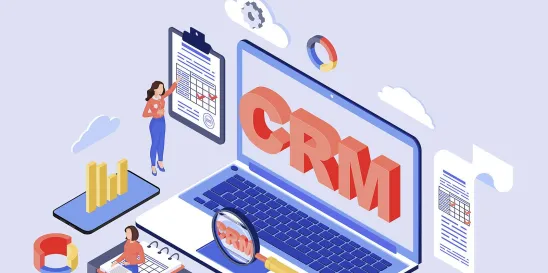In today’s day and age, we are inundated with large amounts of data, coming in from new sources, containing a greater variety and more complex data sets. But what we need isn’t more data, but better data. According to trusted research organizations, 34% of your CRM contact data will degrade each year as people get hired, fired, promoted, change jobs, retire, or even die. At the same time, businesses are opening, closing, merging or being acquired. Without constant attention, all of this can add up to a huge pile of data that is missing, duplicative, outdated, incomplete, or just flat-out incorrect.
These data issues can be particularly frustrating for professional service firms where being able to communicate effectively with clients and prospects is vital. Law firm contacts rely on them to share relevant information about new regulations and other legislative changes, but without clean and up-to-date data within their CRM, law firms and attorneys cannot reach their audience and provide them with content that resonates with them.
Furthermore, data quality issues can be compounded in law firms creating serious challenges regarding email marketing campaigns and attorney adoption. Bad contact data can cause your marketing emails to bounce, and if the bounce rate is high enough, your firm’s emails can be labeled as spam leading to the firm being blacklisted by key companies. Secondly, if the attorneys don’t trust the data, they won’t trust or use the CRM. While bad data is problematic enough on its own, consider what happens when we throw in multiple data sets from integrating other software or systems.
Dealing with Bad Contact Data
So how are some firms cleaning their bad data? Based on almost 20 years of experience working together with hundreds of professional service firms achieving CRM and data quality success, here are our top five tips for identifying data quality issues and safeguarding your system from future problems:
1. Assess
Assessing your data is always the first step in any data quality or CRM project. You should look at how much data needs to be cleaned so you can accurately predict the budget and scope of the project.
These assessments can be automated or manual, depending on what you are trying to accomplish. But they will be looking for the same thing, how many duplicate records there are, where all the data lives, and where information is missing. This missing information may be first and last names or GDPR country information.
Other important things analyzed during the assessment are invalid emails or bounces. Some of these contacts that bounced may have switched companies and were once a huge referral source. What do you do with these contacts, pull them out, research, and update them?
These are all low-hanging fruit that can easily be updated and provide you with more immediate results and returns.
2. Plan
It can be helpful to then carry out a cost-benefit analysis to help determine the best way to proceed with the cleanup. For instance, if you have a significant amount of bad data, it may be more efficient to start with an automated data cleaning and appending option. This can help to improve and enhance a large amount of data in a short amount of time and can be quite cost-effective.
Then, if your organization requires the highest level of data cleanliness, you should follow up with manual data stewarding by trained and experienced data quality professionals. To enhance cleanup efforts and prevent future data quality problems, it’s also important to establish and document your organization’s data standards in a Data Quality Standards Manual that outlines the organization’s specific data styles and processes to ensure consistent contact data entry, formatting and maintenance.
3. Dedicate Resources
Too often, firms are willing to spend money on a data quality cleanup but don’t budget for other essential resources. Investing in the time and human resources required for success is just as important, if not more, than investing in technology. Dedicated data stewards are not only necessary, they are essential.
Put processes in place to make ongoing data reviews routine. Go through bounced emails after each campaign or mailing and, at a minimum, remove them from lists. A better process is to have internal or outsourced data quality resources research the contacts to identify where they are now so you can keep in contact with them.
4. Data Sources
Identify any other sources of bad data that could be contributing to contact problems. For instance, if any existing integrations create duplicates or override correct data with bad data, determine how valuable this data source is. If it is critical, work together with other departments to figure out a solution.
5. Technology
Many lawyers just aren’t interested in manually entering new contact data or updating old contact records in their CRM. As a result, firms have had to figure out how to utilize new technology advancements to increase attorney adoption. That’s where ERM comes into the equation. Rather than relying on Outlook sync, ERM automatically creates contacts from the email signature blocks.
This software not only creates contacts from the signature blocks of emails, which is important because a lot of busy lawyers no longer take time to create contact records but it can also be used to validate and fill in missing information on existing records, which means less time researching.
While it’s easy to become overwhelmed by dirty data, what’s important is to put it in perspective. Focus on discreet data and projects that yield real ROI such as:
- Start with your most relevant records like current clients. Begin cleaning a small subset of these along with any associated key contacts.
- Regularly review frequently used lists to ensure your communications and invitations are reaching the right audience.
- Vet bounced emails after each campaign, using manual procedures or an automated data process to identify bad emails before a campaign to ensure that information reaches your targets on time.
- Tackle time-sensitive one-off projects. For instance, an upcoming event often provides a good opportunity to engage users in cleanup efforts, particularly if the event is important to them.
It’s also important to remember that because data degrades so rapidly, data cleaning can’t be a one-time initiative. Successful data quality projects never really end. The good news is that this means we have forever to get better at data quality!




 />i
/>i

